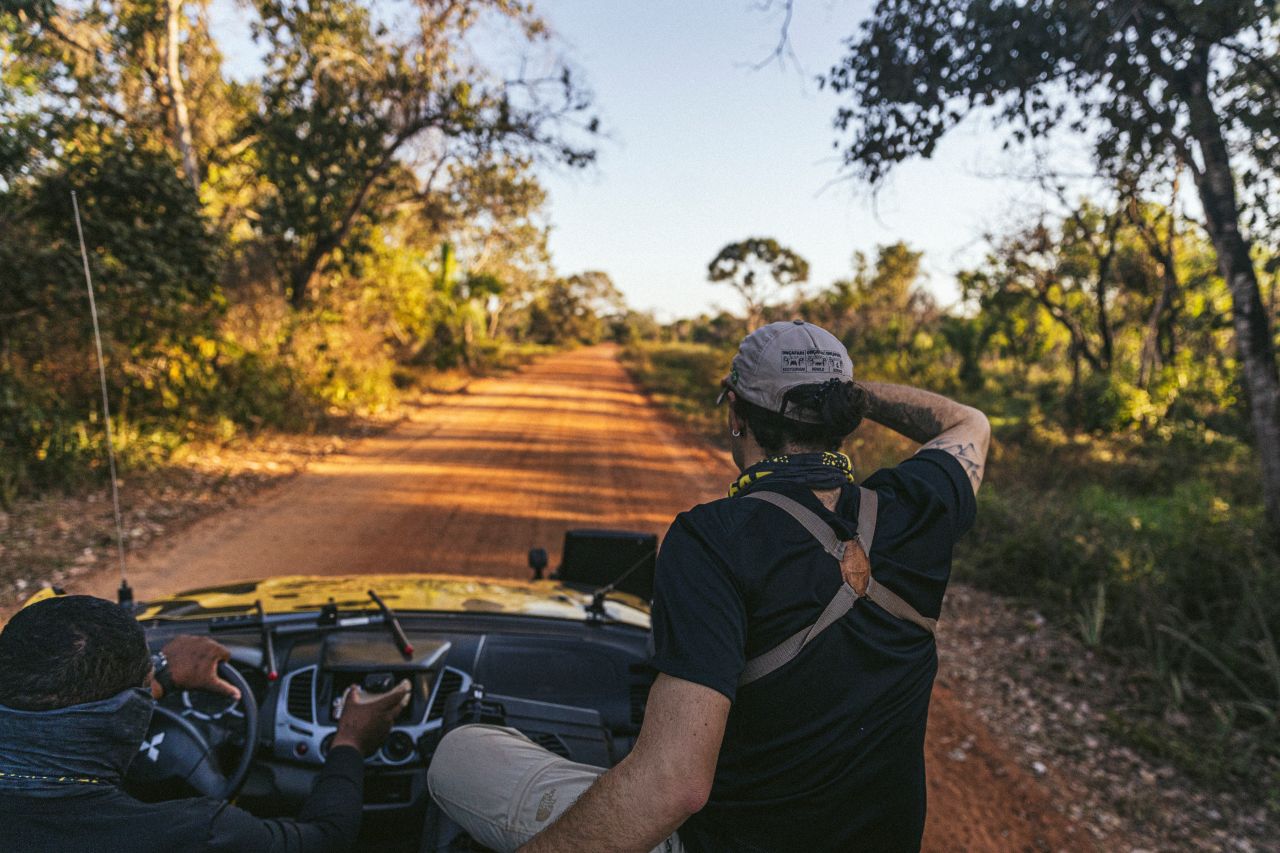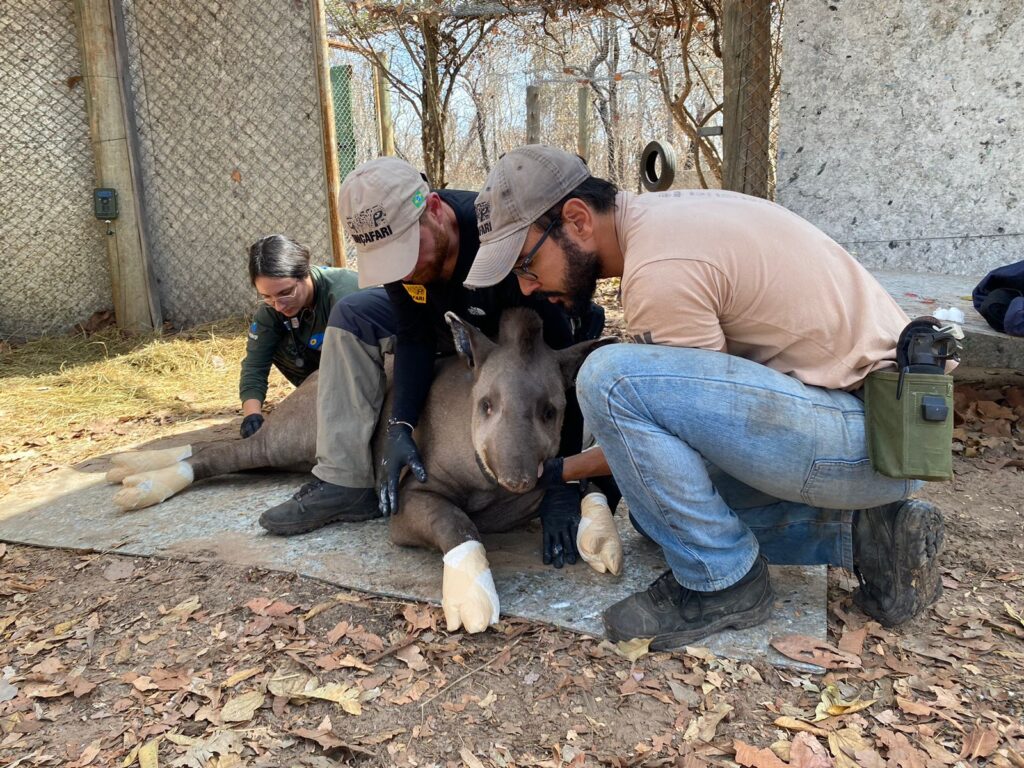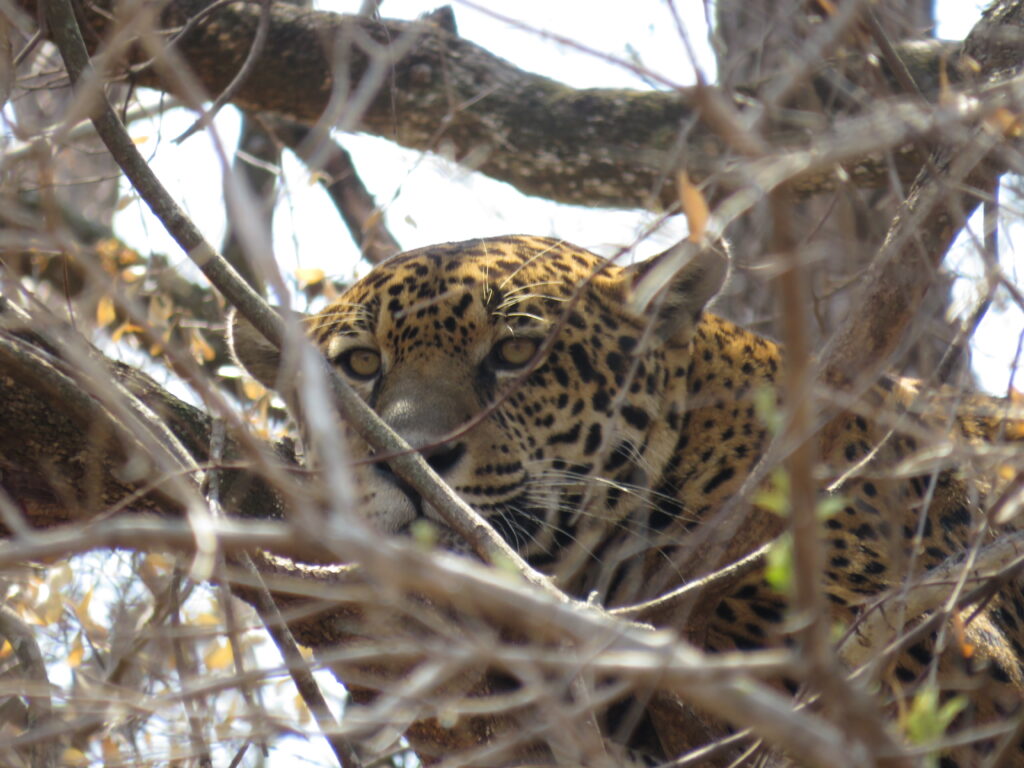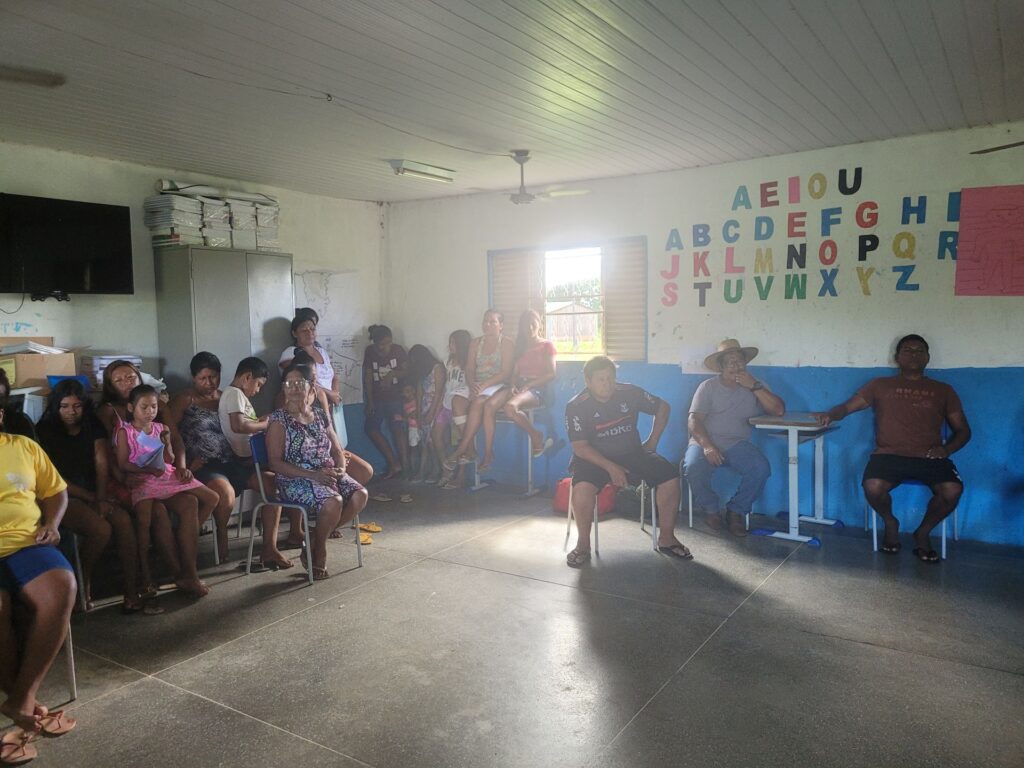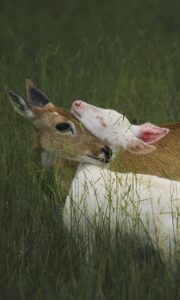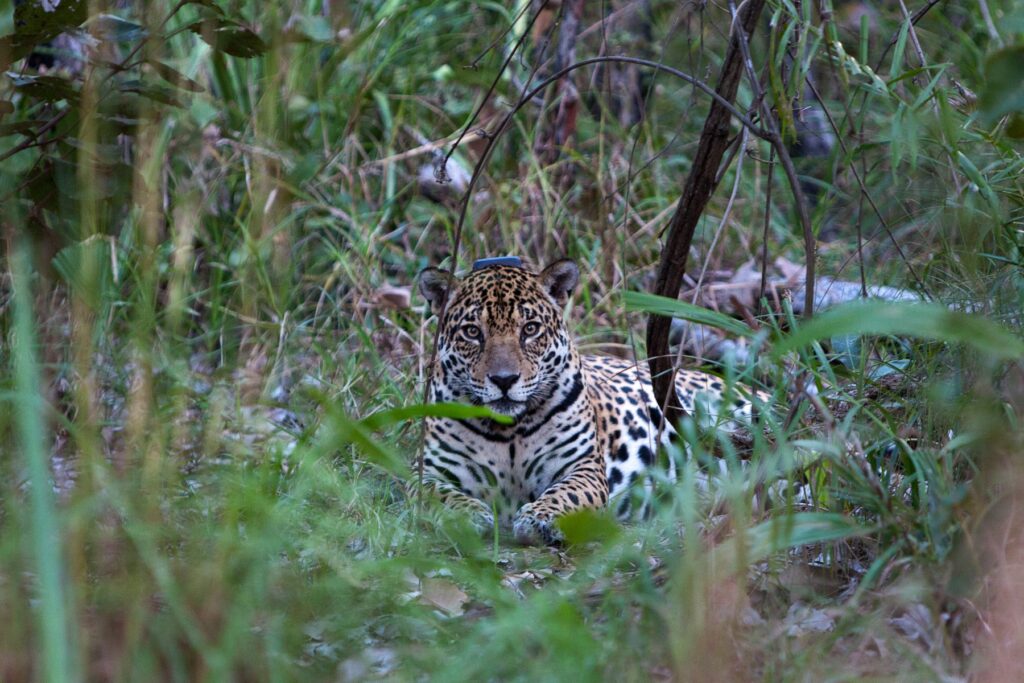Since 2011, Onçafari has been dedicated to the conservation of Brazilian biodiversity through innovation and real impact. Inspired by African safaris and founded from close encounters with jaguars in the Pantanal, Onçafari was created with the goal of combining tourism with respect and awareness about jaguars and the environment. In just over a decade, what began as an initiative to observe and protect these iconic big cats evolved into a broad mission encompassing eight key pillars—promoting environmental education, scientific research, species reintroduction, wildfire response, protection of critical habitats, and much more.
Now, with 14 years of action, Onçafari has achieved numerous milestones that benefit not only the animals, but also the ecosystems and communities that share these territories.
To celebrate this journey, we’ve gathered some of the highlights that symbolize Onçafari’s path over these fourteen years.
1. Isa and Fera: Symbols of Reintroduction
Isa and Fera were the first orphaned jaguars to successfully return to the wild. Rescued as cubs in June 2014 after their mother was tragically lost in Corumbá (MS), they underwent nearly a year of intensive rehabilitation in a 1-hectare enclosure at Onçafari, built at Caiman Pantanal, in Mato Grosso do Sul. During this period, they developed natural hunting behavior with live prey and no human contact—using hidden release doors and avoiding direct interaction to preserve their wild instincts.
In June 2016, with hunting skills fully developed and GPS collars in place, the enclosure gates were opened. Fera left first, followed by Isa. Just four days later, Fera successfully hunted her first wild prey, while Isa started with birds and quickly progressed to larger animals. Within months, they had established territories, joined the local jaguar population, and interacted with other wild jaguars.
Global recognition came in 2018, when both gave birth to cubs in the wild—Aurora (Isa), and Ferinha and Céu (Fera). By 2020, new litters had been born, and today Isa and Fera are grandmothers, with offspring thriving independently in the wild.
This groundbreaking case marks the first scientifically based, successful reintroduction of jaguars in the world—highlighting the value of rehabilitation and release programs.
2. The Journey of Valente: From Rescue to Freedom
Valente is the first lowland tapir released into the wild by Onçafari, representing a landmark in species reintroduction beyond jaguars. Found in August 2024 amid a scorched landscape, he was severely dehydrated and suffering from serious burns on all four legs. His name—Valente (“Brave”)—reflects his strength and resilience.
The devastating 2024 wildfires burned protected areas and Onçafari’s enclosures at Caiman Pantanal. The “Recover Pantanal” campaign was launched to rebuild infrastructure and rescue animals. Valente became a symbol of hope amidst destruction.
Over eight months of care, Valente received advanced treatment—laser and ozone therapy, tilapia skin bandages, physical therapy, and expert care to recover movement and natural behaviors, all while avoiding human habituation.
Finally, in 2025, he was released into a dense forest in the Pantanal, marking a significant expansion of Onçafari’s reintroduction program.
3. Fighting Fire: Anti-Fire Team & Recover Pantanal Campaign
In early 2024, Onçafari launched its Anti-Fire initiative. After catastrophic fires destroyed between 1.9 and 2.6 million hectares of the Pantanal—15–17% of the entire biome—the need for action became urgent.
This front now includes training private and community fire brigades, implementing prescribed burns, building firebreaks, and providing equipment and PPE, all guided by legal operational fire management plans.
The Anti-Fire team was key in the Recover Pantanal campaign, launched to rebuild structures, maintain fire brigades, drill wells, provide food and veterinary care for survivors.
The campaign earned global recognition, placing Onçafari on Condé Nast Traveler’s 2024 “Bright Ideas in Travel” list in the Organizations & Operators category.
4. Jaguars Released in the Amazon
Xamã, an orphaned cub, spent two years in rehabilitation before being released in 2024 into a remote, preserved area of the Amazon. He became Onçafari’s first male jaguar released in the region.
GPS tracking showed he roamed over 14,000 hectares in his first months, avoiding open areas and maintaining wild behaviors—providing unprecedented data on reintroduced male jaguars.
Prior to Xamã, two female siblings, Vivara and Pandora, had been released in 2019. With Xamã, Onçafari advances its mission to restore biodiversity in the Amazon.
5. Jatobazinho in Argentina
Jatobazinho was rescued as a cub in 2018 near a rural school in Corumbá (MS), rewilded by Onçafari, and transferred in 2019 to Iberá National Park, Argentina, where jaguars had been extinct for over 70 years. The effort, led by Rewilding Argentina with Onçafari’s support, was a success.
Despite poor initial health, Jatobazinho recovered and went on to father more than 13 cubs—repopulating the region and becoming a symbol of species recovery.
6. Recognition and Awards
Onçafari’s track record of applied science, practical conservation, and social impact has garnered international recognition. In 2024, it was selected among the 100 Best NGOs in Brazil. In 2025, it received the Unsung Hero award from the LATA Awards in London and was featured in Condé Nast Traveler’s “Bright Ideas in Travel.”
These honors show how local conservation efforts can inspire global change.
7. Expansion to New Biomes
From its start in 2011 at Caiman Pantanal, Onçafari has expanded into three more biomes—Amazon, Cerrado, and Atlantic Forest—reaching over 2 million hectares of influence. Each region integrates fauna monitoring, scientific research, and local conservation strategies adapted to unique challenges.
8. Pemega, Perigara?
“Pemega, Perigara?” is a collaborative project between Onçafari and around 100 Indigenous Boe Bororo people from the Perigara Indigenous Territory (MT).
Spanning 11,000 hectares, this initiative promotes Indigenous autonomy in land stewardship while aligning biodiversity conservation with traditional knowledge and sustainable practices.
9. Protected Lands and Ecological Corridors
In response to growing threats, Onçafari began investing in private reserves and ecological corridors—natural land strips connecting forest fragments or protected areas. These “wildlife highways” facilitate animal movement, seed dispersal, and habitat regeneration.
Ecological connectivity is essential for long-term biodiversity protection—and creating large corridors is central to Onçafari’s vision of harmony between wildlife, nature, and people.
10. Jaguar Habituation and 100% Sightings
In its early years, seeing a jaguar in the Pantanal was rare. That changed thanks to Onçafari’s habituation program—gradually acclimating jaguars to safari vehicles without altering their behavior.
Between 2022 and 2024, 100% of visitors at Caiman Pantanal saw at least one jaguar. As of July 2025, 269 individuals have been identified—thanks to GPS collars, camera traps, and daily monitoring. These efforts enhance ecotourism and deepen understanding of jaguar ecology.
11. Rare Albino Pampas Deer
In 2023, Onçafari recorded the first-ever albino pampas deer in the Pantanal. White-coated, pink-skinned, and light-eyed, this rare genetic mutation decreases survival odds due to lack of camouflage and increased disease risk.
Yet, the deer survived into the following year, and biologist Giovanna Leite photographed the fawn with its mother—earning a bronze medal at the Brasília Photo Show.
Another image, “The Phantom of the Pantanal” by biologist Bruno Sartori Reis, was a finalist for the 2024 FotoDoc Portfolio Award—one of the world’s top wildlife photography competitions.
12. Cerrado on the Global Stage!
In 2023, the Brazilian Cerrado was featured in the BBC’s Planet Earth III. The third episode captured footage from inside the den of Nhorinhá, a maned wolf monitored by Onçafari in the Trijunção Lodge (2018–2023).
With Onçafari’s technical support, the crew documented the species’ maternal care and reproductive behaviors—spotlighting the maned wolf as an icon and ecological indicator of the Cerrado, a biome under severe deforestation pressure.
13. Jaguar Esperança
Esperança was the first jaguar seen regularly by Onçafari’s field team, becoming a symbol of early ecotourism. Her presence allowed the habituation process to begin. She later gave birth to Natureza, who, already accustomed to safari vehicles, paved the way for future jaguar generations to coexist peacefully with tourism.
Her legacy continues through her descendants who still roam the Pantanal.
14. 359 Jaguars Identified in the Pantanal!
Finally, the identification of 359 jaguars across Onçafari’s Caiman Pantanal, Santa Sofia Reserve, and Perigara bases underscores the scale and success of 14 years of conservation. Each jaguar represents a unique story and scientific achievement.
In the Cerrado, recent surveys in Grande Sertão Veredas National Park revealed that ~40% of jaguars are melanistic—a rare condition found in under 9% of the global population. Since 2024, 25 individuals have been recorded, eight of them black jaguars.
Onçafari’s journey has only been possible thanks to the unwavering support of collaborators, partners, advisors, and everyone who believes in protecting Brazil’s biodiversity.

